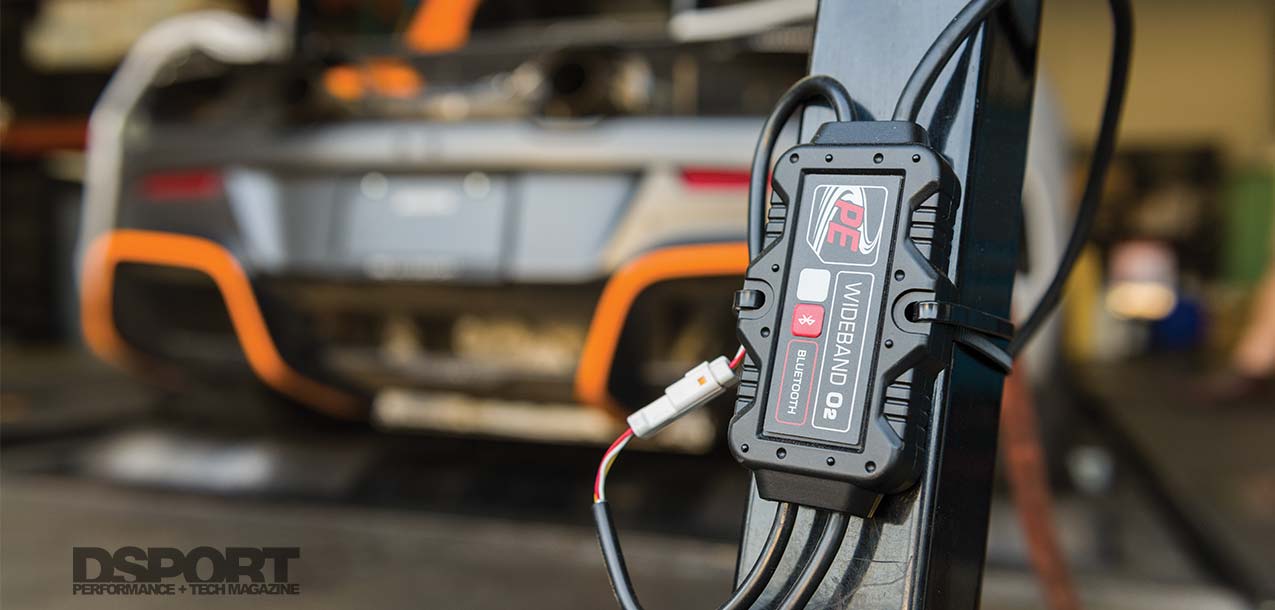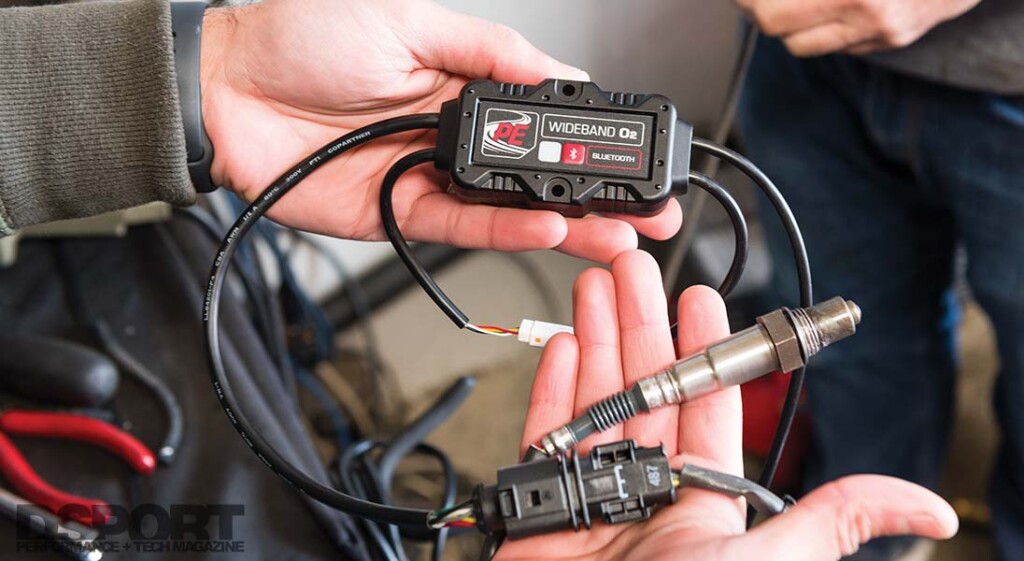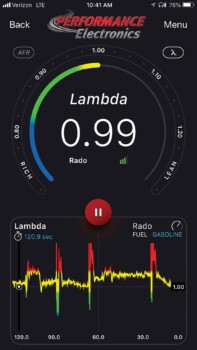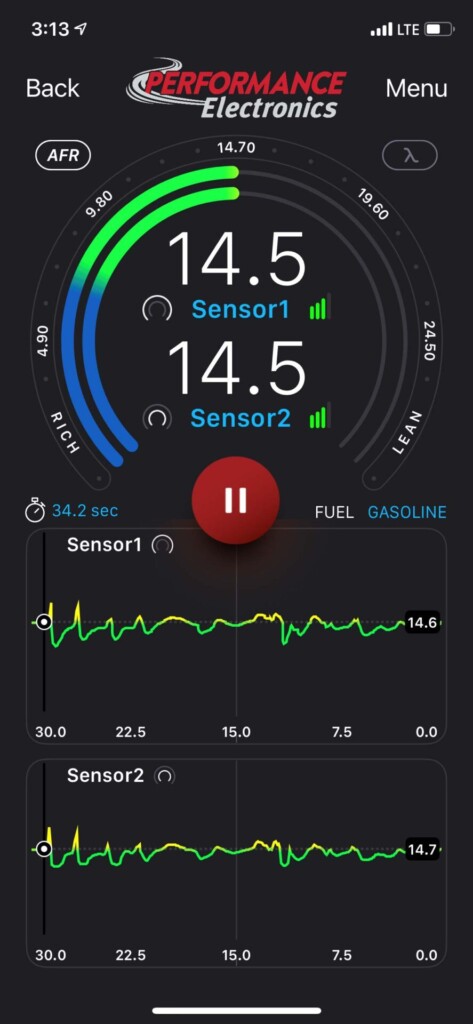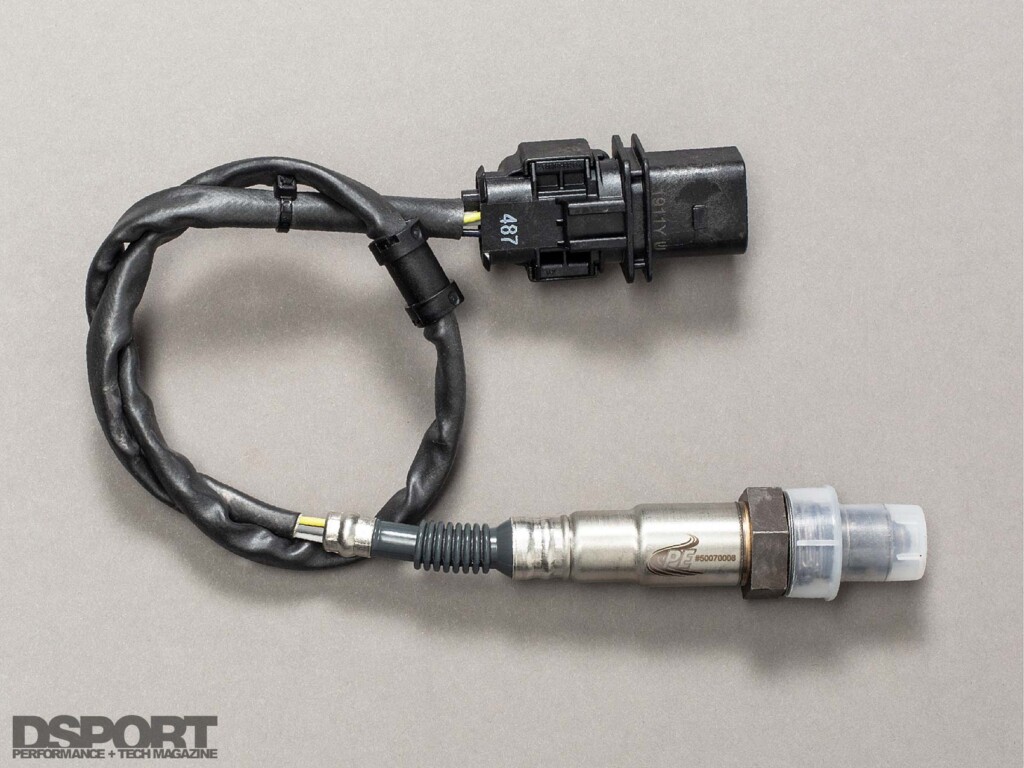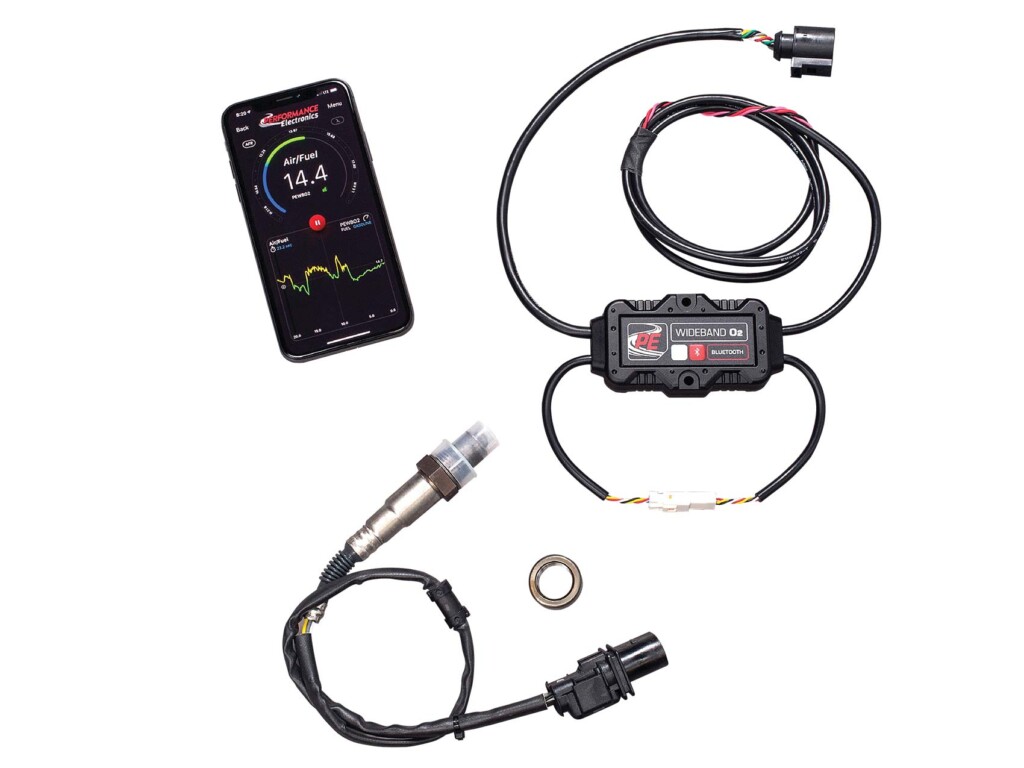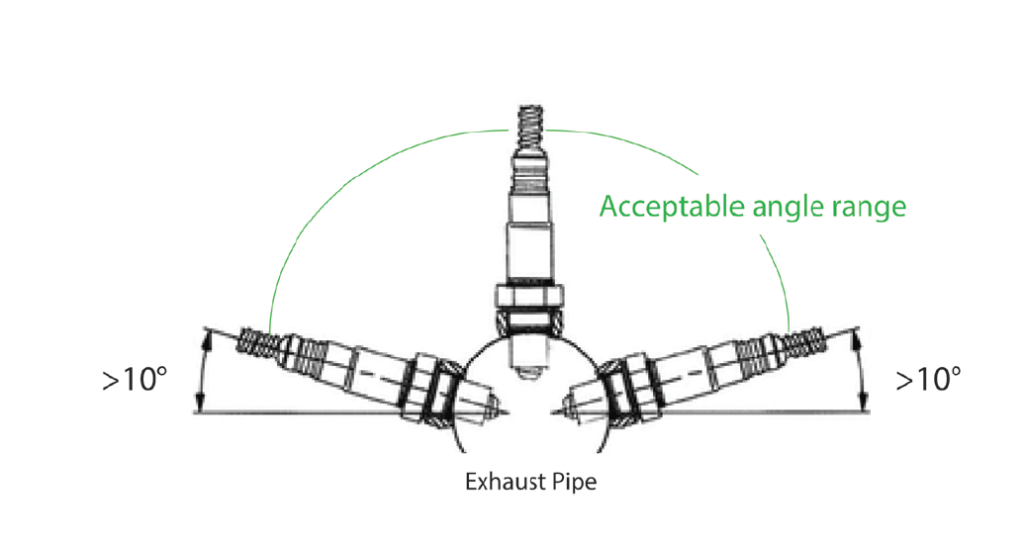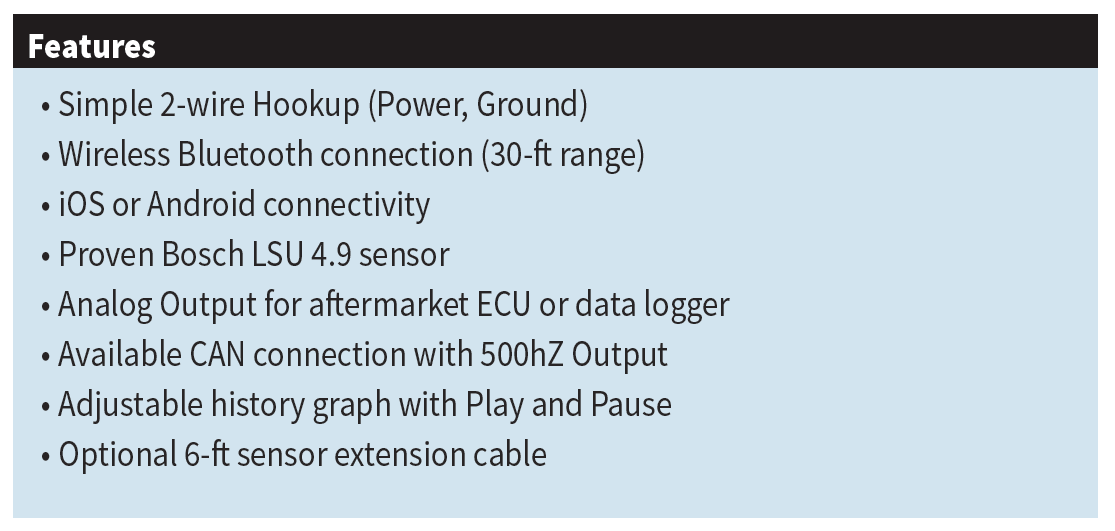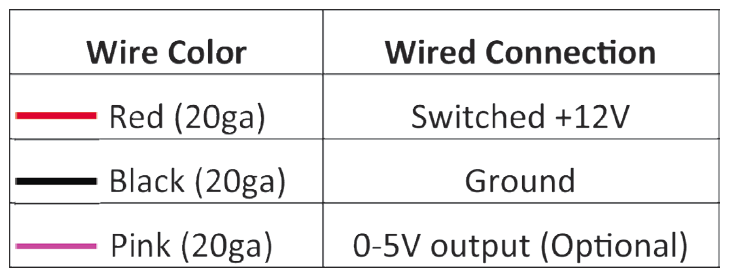If you want to ensure that a vehicle is running right, a wideband air-fuel ratio controller and gauge/monitor is a must. Unfortunately, any installation that requires running wires through the firewall usually leads to hours of positioning your body in contorted positions (that don’t even have names in the most advanced yoga class). After the installation is finally completed, one is often haunted by the “I should have run the wires a different way” or “I wish I mounted the gauge in a different spot.” What if there was a different way? What if you only needed to worry about finding a switched power source under the hood and a ground to power your wideband? In addition to vehicle owners that did not want to schedule a chiropractic visit after a wideband install, tuning shops, mobile tuners and chassis dynos could all take advantage of a 2-wire solution. Thanks to Performance Electronics and Bluetooth technology, the world’s easiest to install wideband is now a reality.
By Michael Ferrara // Photos by Joe Singleton
DSPORT Issue #229
Bluetooth for iOS and Android
By using Bluetooth technology, the Performance Electronics PE-Wideband Controller can utilize any iOS or Android device to be the monitor/gauge for the controller. This means there is no need to cut into a dash to monitor. This also means there are no wires to run through the firewall. The app allows the air-fuel ratio to be monitored as lambda or air-fuel ratio for several different common fuel types (gas, E85, etc.).
The PE-Wideband Controller uses any iOS or Android device as it displays through a Bluetooth connection. It can be a phone or tablet. The software allows either Lambda or air-fuel ratios for popular fuels.
One nice aspect of having the monitoring paired via Bluetooth is that you can move the monitoring device outside the car as needed. This can be extremely helpful on any vehicle that has an adjustable fuel pressure regulator as the monitor can be placed where it can be seen while adjustments are made. For carbureted vehicles, this feature makes it easier than ever to set the idle mixture.
The app can also connect to two PE-Widebands for a dual channel application.
Simple Install
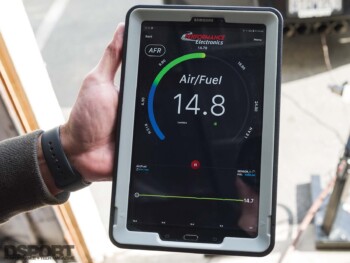 If you are fortunate enough to have an additional bung in your exhaust system before the catalytic converter (when equipped) then your install can be as simple as two wires. If you don’t have a bung in your exhaust system already, you can get one welded in for $20-$50 at most shops if you mark the location and bring the exhaust pipe to the welder. As previously mentioned, the two wires that need to be hooked up are power and ground. If you are setting up the PE-Wideband Controller to be used in a temporary configuration for troubleshooting a vehicle, you can simply use any power source whether it is ignition switched (only has +12v with ignition on “ON” position) or constant (always has +12v like the battery terminal). DO NOT hook the system up to constant power for permanent installs as the heater circuit used in the wideband sensor will drain the battery when the vehicle is not running. For permanent installations, be sure the power switches on and off properly.
If you are fortunate enough to have an additional bung in your exhaust system before the catalytic converter (when equipped) then your install can be as simple as two wires. If you don’t have a bung in your exhaust system already, you can get one welded in for $20-$50 at most shops if you mark the location and bring the exhaust pipe to the welder. As previously mentioned, the two wires that need to be hooked up are power and ground. If you are setting up the PE-Wideband Controller to be used in a temporary configuration for troubleshooting a vehicle, you can simply use any power source whether it is ignition switched (only has +12v with ignition on “ON” position) or constant (always has +12v like the battery terminal). DO NOT hook the system up to constant power for permanent installs as the heater circuit used in the wideband sensor will drain the battery when the vehicle is not running. For permanent installations, be sure the power switches on and off properly.
Advanced Installations
If you are up for hooking up an additional wire or two, the PE-Wideband Controller can supply its wideband information to a dash, logger or ECU via an analog or CAN output. The analog output generates a standard 0-5v output that can be fed into an analog input channel of a dash, logger or ECU. Performance Electronics supplies the transfer function to convert this voltage output to a lambda or A/F number. For those using a more modern dash, logger or ECU, the PE-Wideband Controller has a conventional 2-wire CAN output that broadcasts the wideband information out at 500 times per second.
In the Box
 The PE-Wideband Controller ($288 MSRP) unpacking reveals the controller unit, a Bosch LSU 4.9 O2 sensor and a weld-in O2 sensor bung. The controller can be mounted in any location that stays below 150 degrees Fahrenheit. In fact, the controller unit will warn you with a series of blinks if it is above 176 degrees Fahrenheit. If your application won’t work well with the controller mounted within about 30 inches of the sensor, be sure to order the optional 6-foot extension ($30 MSRP).
The PE-Wideband Controller ($288 MSRP) unpacking reveals the controller unit, a Bosch LSU 4.9 O2 sensor and a weld-in O2 sensor bung. The controller can be mounted in any location that stays below 150 degrees Fahrenheit. In fact, the controller unit will warn you with a series of blinks if it is above 176 degrees Fahrenheit. If your application won’t work well with the controller mounted within about 30 inches of the sensor, be sure to order the optional 6-foot extension ($30 MSRP).
It doesn’t get any simpler than this to wire up a wideband. Red to power and black to ground. There is also a pink wire that outputs a 0-5volt analog signal. A pair of wires on the unit can also be connected to a CAN network.
DSPORT Garage Usage
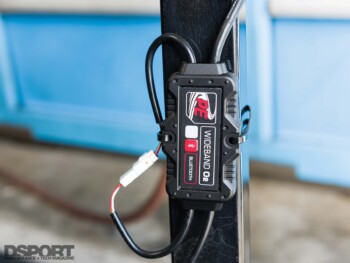 We decided to use the PW-Wideband Controller on our Dynojet 424XLC2 chassis dyno. Since we have not yet upgraded to Winpep 8 software and hardware, we still have the Winpep 7 wideband controller in the stack. While it works pretty well, finding replacement sensors is becoming harder and harder. By using the analog output from the PE-Wideband Controller, we can still feed the Dynojet computer the air-fuel ratios through one of the four analog channels. This allows us to graph horsepower and RPM along with A/F ratio. What we really like about the system was the ability to repurpose an older Android based tablet that was just gathering dust. Now it is a full-fledged useful tool and display in our dyno room.
We decided to use the PW-Wideband Controller on our Dynojet 424XLC2 chassis dyno. Since we have not yet upgraded to Winpep 8 software and hardware, we still have the Winpep 7 wideband controller in the stack. While it works pretty well, finding replacement sensors is becoming harder and harder. By using the analog output from the PE-Wideband Controller, we can still feed the Dynojet computer the air-fuel ratios through one of the four analog channels. This allows us to graph horsepower and RPM along with A/F ratio. What we really like about the system was the ability to repurpose an older Android based tablet that was just gathering dust. Now it is a full-fledged useful tool and display in our dyno room.
The Bottom Line
The days of reading spark plugs to set the proper air-fuel ratio for your engine is over. Affordable wideband monitors can display the air-fuel ratio under any condition. By incorporating Bluetooth technology, Performance Electronics has developed a product that is more install and car friendly than any other wideband device. In fact, the PE-Wideband Controller’s ease of installation opens the door for it to be a go-to tool for tuners, mechanics and chassis dyno operators. While this is likely your first introduction to the Performance Electronics brand, don’t be surprised to see more solution-based products in the near future. Stay tuned.


